SCA Modified Resin
Principal of Sag Control Agent for Automotive OEM Paint
Introduction
Sag Control Agent is also called as SCA, or, Rheology Control Agent resin, also as RCA.
Sagging, it is a major problem in automotive OEM paint and some general industry paint due to higher film thickness at vertical position being a requisite in these applications. In the market there are a number of conventional anti-sagging agents available, such as silicates, wax, and organic clay and so on to adjust the rheology of the paint. However, these products result in negative effect on the gloss, transparency, also mechanical and chemical properties of paint film.
Allio has developed different unique types of Sag Control Agent (called as SCA) to solve the above mentioned problems. For both melamine based baking paint and 2K PU paint, SCA is available.
Paint systems based on SCA resin can be characterized as follows:
. The rheology of paint is adjusted in such a way that sagging is prevented whilst the leveling of the system remains very good, no significant decrease in the solids content of the paint.
. In pigmented systems SCA prevents settling, flocculation and flooding.
. In metallic pigment system SCA can assist metallic flake orientation.
. In melamine based baking paints SCA is “built into” the film during baking, and as a result, the original SCA is not present in the cued film, cured film retains optimum gloss and transparency.
. No change in the properties of the paint film, i.e. solvent and chemical resistance and mechanical properties.
Theory of Sagging
The extent of sagging is, in fact, identical with total mass transport Q in the paint film in the vertical position. It can be derived that the total mass transport Q per breadth and per unit of time integrated over the total thickness of the paint layer is given by the equation (1):
Q=ρgΔ3/6η (1)
In which ρ is the density of the paint, g is the gravity, Δ is the total layer thickness and η is the dynamic viscosity.
From equation (1) it appears that the extent of sagging is proportional to the third power of the layer thickness and inversely proportion to the dynamic viscosity.
The Chemistry of SCA
Physically the SCA consists of fine crystalline needles. Fig. 1 shows a scanning electron micrograph of SCA as it was isolated from a SCA resin.

Fig.1 SCA shows on Scanning Elecron Micrograph
Chemically the needles consist of poly-urea. The form and the size of the particles depend strongly on the poly-urea molecules structure and processing. The poly-urea molecules structure description is given below as Fig.2:

Fig.2 Illustration of the molecules structure of poly-urea
In SCA based paint, the SCA flocculates to build a loose network by the formation of hydrogen-bridges between the poly-urea molecules as Fig.3:
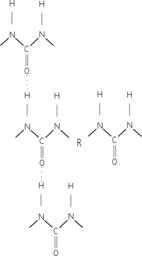
Figure 3 Hydrogen-bridge between poly-urea molecules
These poly-urea molecules are insoluble in the binder system, as well as in organic solvents. The crystallized needle particles that can agglomerate to three-dimension network structure as shown on Fig.4:
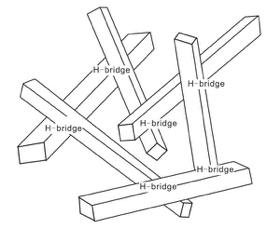
Figure 4 Illustration of three-dimension structure of SCA needle-shaped crystalline
The Hegman-fineness of an SCA resin is in general below 15μm. However, larger particle size does not have a negative influence on paint film, because the SCA particles have the unique property of disappearing during baking. The disappearance of the SCA particles during baking cannot solely be explained by melting and solubilization in the binder system. The melting point of SCA itself is well above the normal baking temperature. However, analytical measurements indicated that the poly-urea molecules in the SCA particles are not inert. In the presence of melamine resins the poly-urea molecules react with formaldehyde which is released during baking. The reaction between formaldehyde and SCA proceeds as follows (Fig.5):
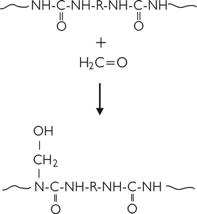
Fig.5 Reaction between formaldehyde and SCA
The Rheological Behavior of SCA
Fig.6 shows an example of the influence of SCA on viscosity. The curve clearly shows the pseudoplastic behavior of Allio SCA resin.
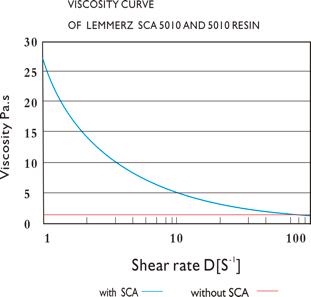
Fig.6 Viscosity curve of resin with and with out SCA
Fig.7 shows an example of shear stress as a function of shear rate. It shows that from a situation of rest a certain yield stress has to be overcome in order to break down the structure caused by SCA.
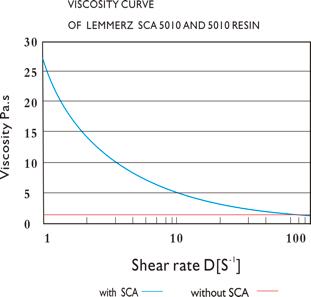
Fig.7 Flow curve of a resin with and without SCA
Under relative mild shear condition, and certainly during application e.g. in the nozzle of spray gun, the network is destroyed. After application, the paint restructures itself thereby preventing sagging. In the time required for rebuilding the network structure, the film levels to yield a smooth film, as illustrated in Fig.8. Because of this reversible formation and break down of a network in the binder and in the paint, the SCA shows its typical rheological behavior. During the baking schedule the viscosity of the paint shows a sharp decrease in viscosity as illustrated in Fig.8. Medium and high solid system shows an even pronounced decrease in viscosity in comparison with conventional stove paints. The extent of sagging depends on the so-called fluidity which is the absolute value of total integral of the reciprocal viscosity during time. If fluidity exceeds a certain value sagging will be visible. The SCA plays a role to diminish viscosity dip and so prevent sagging.
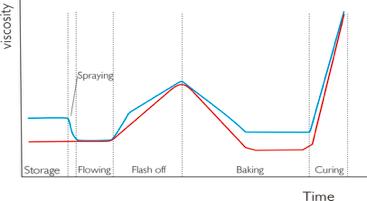
Fig.8 Illustration of the viscosity changing in the whole schedule of with and without paint SCA from
storage to film build-up
What is the high efficient SCA
The content of the needle-shaped crystalline of the poly-urea in SCA resin is called as SCA active content, a very important index of the SCA resin, which determines the rheological character of SCA resin directly, moreover effects the result of anti-sagging in paint system, a high active content SCA resin results in a lower adding quantity of SCA resin if to acquire a same anti-sagging effect with low active content SCA resin. The SCA resin containing high active content means a high efficient SCA resin.
Producing high efficient SCA resin is a great challenge, but Allio can provide high efficient SCA resin with active content is 8-11%, so as the recommended quantity is only 1/3 to 1/2 to conventional SCA resin in market, whose active content is 3-5%.
Fig.9 is a comparison on a scanning electron micrograph between high efficient SCA resin and conventional SCA resin. It shows clearly that the concentration of needle-shaped crystalline, active content, in high efficient SCA resin is higher than that in conventional SCA resin.
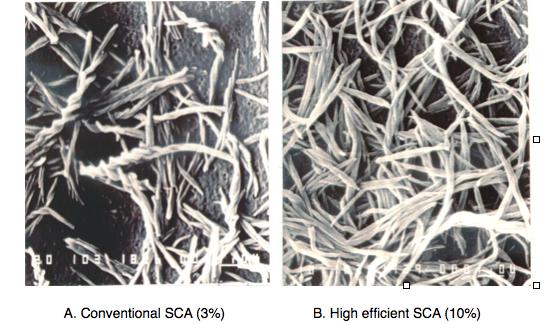
Fig.9 Comparison on scanning electron micrograph between hi-efficient SCA resin and conventional SCA resin
It should be emphasized that the recommended quantity of high efficient SCA is lower, though the poly-urea molecule structure and needle-shaped crystalline are the same between high efficient SCA resin and conventional SCA resin.

